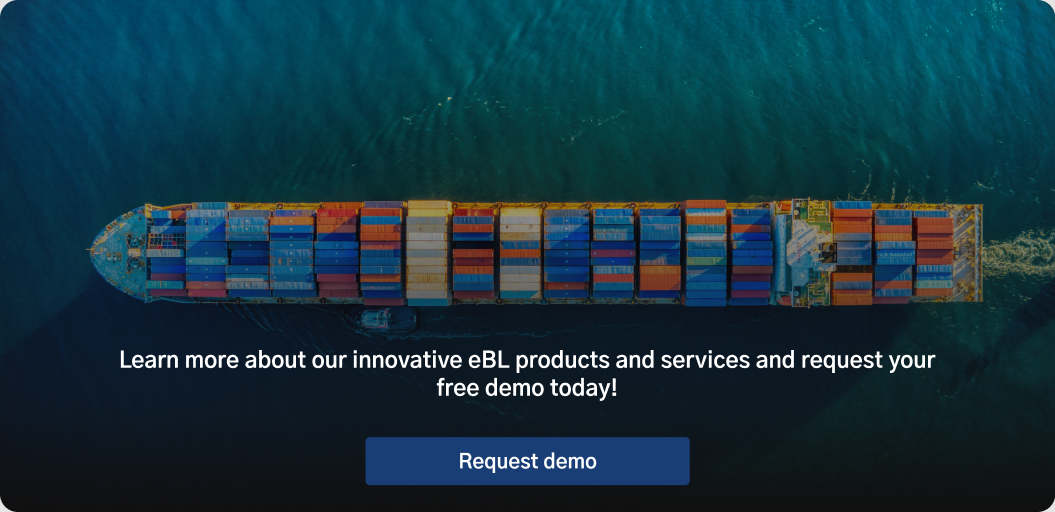The electronic bill of lading (eBL) is already enabling trade counterparties to get their hands on cargoes days faster, freeing up working capital along the global supply chain.
The Digital Container Shipping Association (DCSA) estimate that adoption of eBLs currently accounts for only 0.1% of all bill of lading issuances and an increase to 50% eBL adoption could potentially save the industry more than $4 billion per annum. For many years there seemed to be limited use for the technology and only the largest of organisations could reap the benefits of eBLs and until recently this is where it has remained.
Click here to learn more about eBLs and their role in international trade.
So here are 4 benefits of the Electronic Bill of Lading that should increase utilisation:
1. Removal of document transportation costs from the costs of transportation
As a digital alternative to the traditional paper document, this enables the removal of document transportation from the supply chain. Some solutions are able to facilitate the digital transfer via a cloud-based system and with the increased prominence of blockchain technology, others provide a mirror of the traditional paper process only the transfer is executed via peer-to-peer blockchain technology rather than by couriers. This also offers significant cost savings since trade parties are no longer required to pay for transportation of documents whilst benefitting from the time savings that come from cutting transfer times to minutes rather than weeks.
Put simply, would you pay for an uber to get the physical receipt for your uber?
2. Ensure business continuity and enable faster documentation transfers
Physical damage to the traditional paper bill of lading can have disastrous consequences as the issuance of replacements especially at short notice can cause serious delays and disruptions for businesses. From a first-hand perspective, we have known of instances of delivery truck thefts in South America containing shipping documents which directly inflicted huge costs to business.
eBLs are stored in digital formats either in the cloud or on a blockchain network, and therefore they are always accessible and can be transferred within minutes allowing for trade to flow seamlessly. The limitation of this being faster is by the extra security put in place.
3. Enhanced security and reduced susceptibility to forgery, fraud and loss
As previously mentioned, electronic Bills of Lading are stored and transferred from secure cloud storage or via peer-to-peer blockchain platforms. This allows them to be digitally signed and encrypted eliminating concerns of the document being forged, manipulated, or stolen. To add further to this, there will usually be industry-standard 2-factor authentication, control of visibility and roles within the solution and best of all as it is a digital document there only needs to be one copy rather than the usual three originals.
eBLs solutions provide unparalleled security and privacy between the transacting parties compared to the paper alternative and can easily track and manage all eBL events such as eBL notifications, title transfer, amendment, surrender and switch to paper. Which in turn makes it harder to forge or edit an electronic document than a paper one.
4. Improving cash flow and increasing reliability
It is not uncommon for paper bills of lading not to arrive in time to release the cargo resulting in costly delays.
Since the digital equivalents can be transferred at comparatively lightening speeds and not at the speed of a courier, cargoes can be released on time even on short legs, without the use of a letter of indemnity (LOI), resulting in shorter payment cycles, efficient cash flow management and improved working capital.
On the flip side to this, knowing when shipments (under normal circumstances) can be released adds levels of reliability to logistics operations and avoids constant tracking and international calls.
Conclusion
The digitisation of trade documents such as the bill of lading has presented clear and tangible benefits compared to its still paper-based equivalent and its benefits were brought into focus during the pandemic when delays caused by difficulties in presenting paper bills of lading surfaced. Whilst the pandemic has accelerated pre-existing trends in the adoption of eBLs, we still see many corporates not informed on the benefits gained from the utilisation of eBLs.

